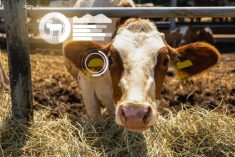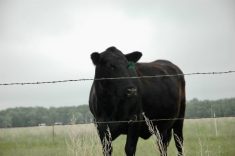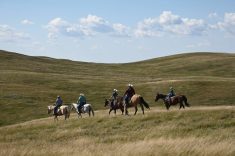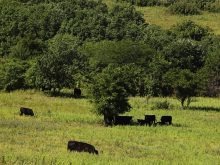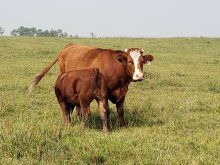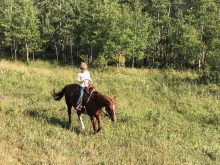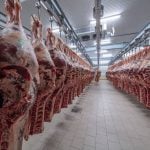A few years ago, I was driving north on Highway 59 in southern Manitoba after suppertime. I don’t have much of a chance to see many stars in the city, so I stopped the car. While I was outside for a minute (it was -25 C) near a pasture, some cows came up to the fenceline.
My thoughts shifted from the skies to them, and I thought they were in pretty good body condition and would be ready, if they were to calve in a couple of months. They only needed to retain this condition with the help of some well-balanced diets once they are nursing a new calf and looking forward to be successfully re-bred. That means they should maintain a visible body condition score (BCS) of 5 to 6 (out of 10) by calving, which should be carried to the end of their breeding season. Such adequate BCS is research-proven to return a higher proportion of fertile beef cows compared to thin cows (BCS less than 4) to a strong estrus 80 to 90 days post-partum, which ends in high conception rates. Their next-year’s calves, which are born earlier in a desired short-calving season, also result in higher autumn weaning weights (by as much as 23-25 kg).
The average cow produces about 10 litres of milk for a newborn calf (about 60 to 75 per cent of all milk is produced in the first few months post-calving). To feed the calf and retain body condition requires a good solid intake of essential nutrients. First-calf heifers also need more of the same nutrients to gain a couple of hundred pounds of weight as they grow into maturity.
Read Also
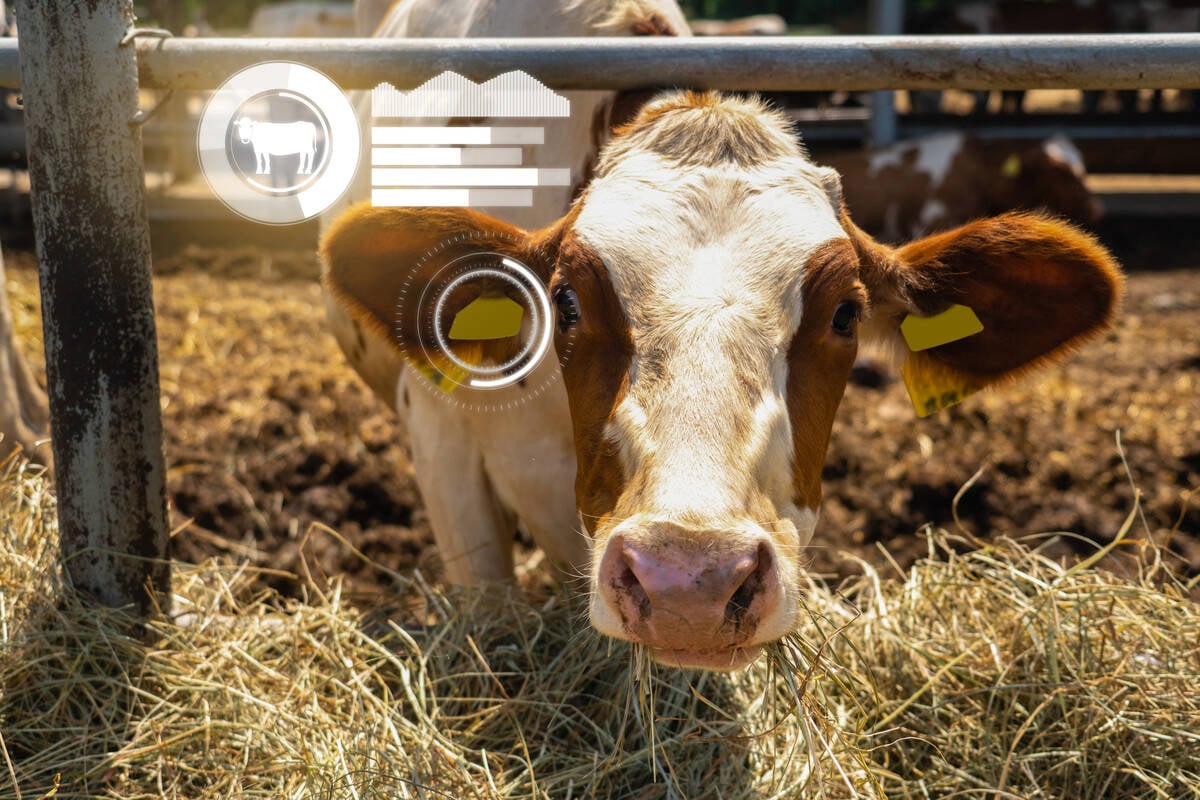
Cows in the cloud
Beef cattle herd management software has become an essential tool over 15 years for Lonesome Dove Ranch in Saskatchewan.
Consequently, an average nursing beef cow requires about 25 to 50 per cent more energy, 20 to 25 per cent more protein and nearly double the minerals and vitamins compared to an early gestating beef cow. Her post-calving forage-based diet at this time should contain about 58 to 62 per cent total digestible nutrients, 11 to 12 per cent protein, 0.7 per cent calcium and 0.5 per cent phosphorus, with a fortified compliment of other macro- and trace minerals and vitamins. Such NRC requirements are also based upon the same cow consuming about two to 2.25 per cent of her body weight (dry matter basis) or about 10 to 13 kg of dry-based feed. The more traditional cow herds that calve out at the beginning of February to the middle of March, the coldest months of the season, will be further be challenged nutritionally. As noted by university and extension researchers’ cold weather rule of thumb: for every 1 C drop in temperature below 0 C, the beef cows’ TDN (total digestible nutrients) energy maintenance requirements are increased by about two per cent.
A few years ago on the same subject, I asked a few beef producers how they successfully maintained their cows, which calved out during the coldest months of winter at a BCS of five to six.. This is how they responded to me:
• 250 beef cows: The producer feeds a traditional overwinter diet of 35-40 lbs. of good quality alfalfa-grass wrapped hay to his Simmental x black Angus herd. Once they calve, three to four pounds of barley are supplemented. Three to four ounces of a 1:1 breeder cattle mineral with salt are fed on the side.
• 200 beef cows: This beef producer’s purebred red Angus brood and first-calf cows are fed a total mixed ration (TMR) of 20 lbs. of corn silage (with lots of grain) and 25-30 lbs. of second-cut alfalfa hay, mixed with four ounces of a 3:1 vitamin premix with monensin. A few pounds of extra grain are only fed when the windchill temperature dips below -25 C.
• 220 beef herd of crossbred Herefords: This couple feeds an overwinter total mixed ration of 25 lbs. of barley silage and 20 lbs, alfalfa/grass hay. They grain-feed at two to five pounds of grain and usually feed even another pound or so when the windchill temperature dips below -18 C. As the weather gets warmer and the cow herd is past 60 days post-partum, grain feeding is eliminated; also, less barley silage is fed and is replaced by lower-protein grass hay.
Most beef producers, including these three testimonials, often estimate the amount of feed they will need for the winter, first feeding their early-mid gestation cows the lower-quality feeds such as straw-based diets or fair-quality grass-type hays, where cow requirements are modest.
Then, as the calving season approaches, they implement more nutritious saved feeds in their diets such as legume/alfalfa hays and ensiled (higher-energy) forages such as barley silage.
Once the cows calve and their nutrient requirements are at their highest point, depending on forage quality, they bring out their all-star diets, similar to those post-calving diets examined above.




